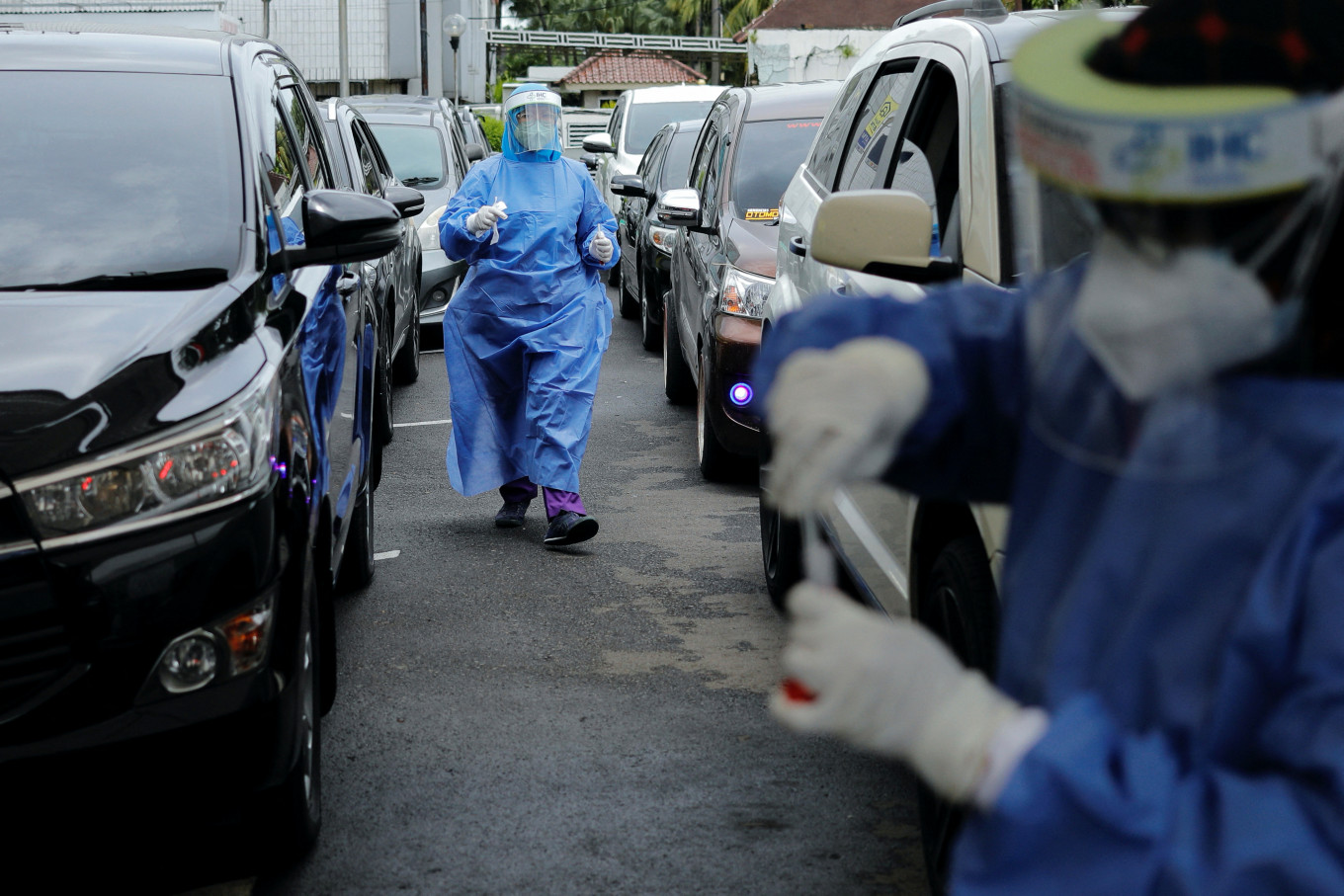Popular Reads
Top Results
Can't find what you're looking for?
View all search resultsPopular Reads
Top Results
Can't find what you're looking for?
View all search resultsGovernment faces calls for return to stricter pandemic curbs
Medical professionals urge review of masking, testing.
Change text size
Gift Premium Articles
to Anyone
T
he government faces mounting calls by health experts and medical professionals to reimpose stricter curbs as Indonesia continues to see a worrying increase in new COVID-19 infections fueled by the spread of the highly contagious Omicron subvariants BA.4 and BA.5.
The country has recorded more than 1,000 new daily COVID-19 cases for the past eight consecutive days, and on Wednesday, authorities recorded almost 2,000 new cases, the highest since early April.
The weekly caseload has increased by more than 100 percent in the past week from 3,688 cases to 7,587, while active cases nearly doubled during the same period, from 4,734 cases to 8,594. The number of fatalities has risen as well, from 38 deaths last week to 44 deaths this week.
The Indonesian Doctors Association (IDI) has called on the government to review its eased mask-wearing mandate to curb the spread of the virus.
“Considering the current circumstances, we advise the public to mask up both indoors and outdoors,” Erlina Burhan, a member of IDI’s central board, said on Tuesday as quoted by kompas.com.
Just last month, President Joko “Jokowi” Widodo announced that mask-wearing was no longer required outdoors, though he still recommended masks for crowded outdoor spaces, as well as for the elderly and those with underlying health conditions and acute coughing.
Erlina also called on the government to reimpose mandatory polymerase chain reaction (PCR) tests for domestic travel, which were lifted last month as well.
Separately, Tjandra Yoga Aditama, a professor of pulmonology and respiratory medicine at the University of Indonesia, said that aside from a reinstated mask mandate, the government should also increase its testing, tracking and genomic sequencing surveillance.
“The emergence of the BA.4 and BA.5 subvariants proves that projections for the COVID-19 outbreak are still largely unpredictable. Low testing and poor whole-genome sequencing will only make it difficult for us to monitor further developments,” Tjandra said in a statement on Thursday.
“We need strong epidemic surveillance as one of the key components of controlling the outbreak. We should find out when, where and how all new COVID-19 patients contracted the disease, if possible."
The rate of COVID-19 testing in Indonesia has dropped significantly following the peak of the Omicron-fueled third wave in mid-February.
According to the national COVID-19 task force, last week the country conducted around 1.2 tests per 1,000 people. The figure is still higher than the minimum testing rate of one test per 1,000 population per week, as per World Health Organization recommendations, but fell drastically compared to February, when the government was able to test around eight people per 1,000 per week.
Both Erlina and Tjandra also urged the government to speed up COVID-19 primary vaccination and booster shots to improve public immunity against the coronavirus.
Indonesia’s vaccination coverage is the second-lowest in Southeast Asia, slightly above Myanmar, according to official statistics collated on the ASEAN website as of June 14.
As of Thursday, Indonesia has administered 369 million primary COVID-19 vaccine doses to 62 percent of its population. It is aiming to inoculate 70 percent of the country’s population by the end of the month. So far, only about 23 percent of the targeted 208 million people have received booster shots.
National COVID-19 taskforce spokesperson Wiku Adisasmito has promised to increase Indonesia’s testing capacity in the coming weeks.
"Our testing rate has relatively increased in the past three weeks, but we'll continue to improve it. We also urged those who experience flu-like symptoms or those who have been in close contact with COVID-19 patients to get themselves tested,” he said on Tuesday.
To help accelerate the third-jab rollout, the task force has also issued a circular mandating booster shots for people over 18 attending crowd-pulling events of more than 1,000 visitors, while all children between the age of 6 and 17 at such events must be fully vaccinated.
The new provision also stipulates that attendees of events involving ministerial-level high-ranking officials must present negative PCR test results taken two days prior.
Large-scale events have largely returned to the country after the government recently eased COVID-19 restrictions to their lowest level.
Earlier this month, for example, the Jakarta administration brought back the annual Jakarta Fair exhibition in Kemayoran, Central Jakarta, which boasts daily attendance rates of roughly 100,000 people.
Indonesia announced its first confirmed cases of the BA.4 and BA.5 subvariants on June 8. Three foreigners and one Indonesian attending an international event in Bali had been exposed to the virus.
Preliminary data suggests that the subvariants are more contagious than the original Omicron strain and that they have contributed to a surge of infections in several countries, including South Africa, Chile and Portugal.
Studies have found that the new subvariants can circumvent immunity from prior infection and vaccination, although there is still no evidence to suggest they cause more severe symptoms.
Health Minister Budi Gunadi Sadikin previously predicted that a BA.4- and BA.5-fueled wave of infections would peak in the second or third week of July, with daily new cases likely reaching up to 20,000 per day.
However, Budi assured the public that the wave would likely be less severe compared to the Omicron wave earlier this year or the Delta variant-fueled second wave last year. Based on data from South Africa, the number of cases and hospitalizations during the peak of the BA.4 and BA.5 wave was only one-third of that recorded during the Delta and Omicron waves, while fatalities amounted to a 10th of the cases from previous waves.










